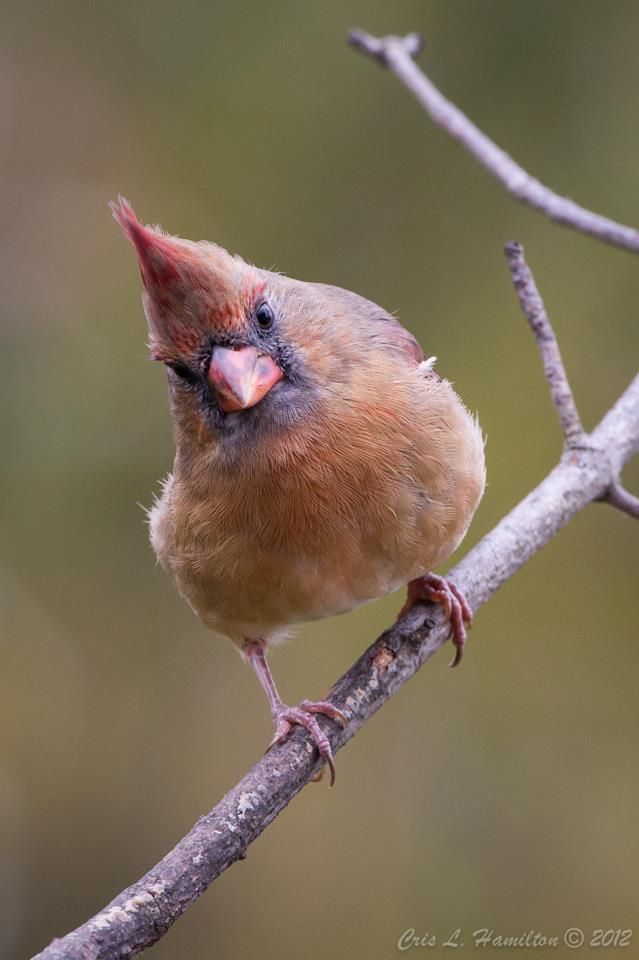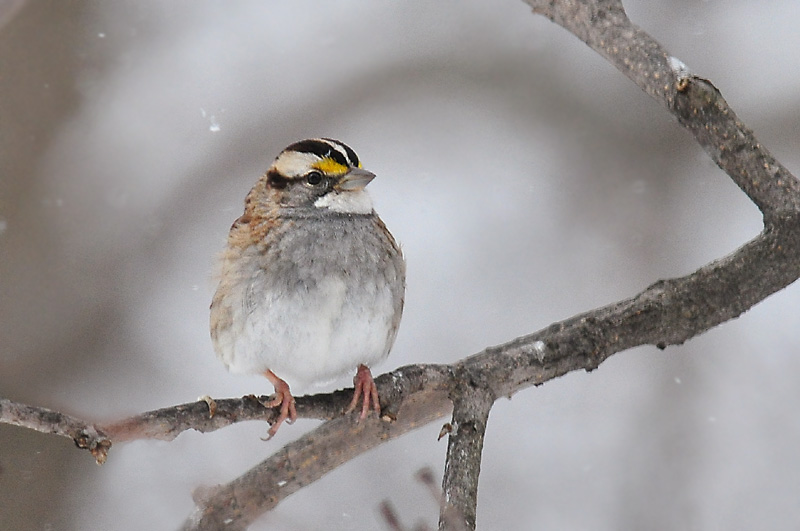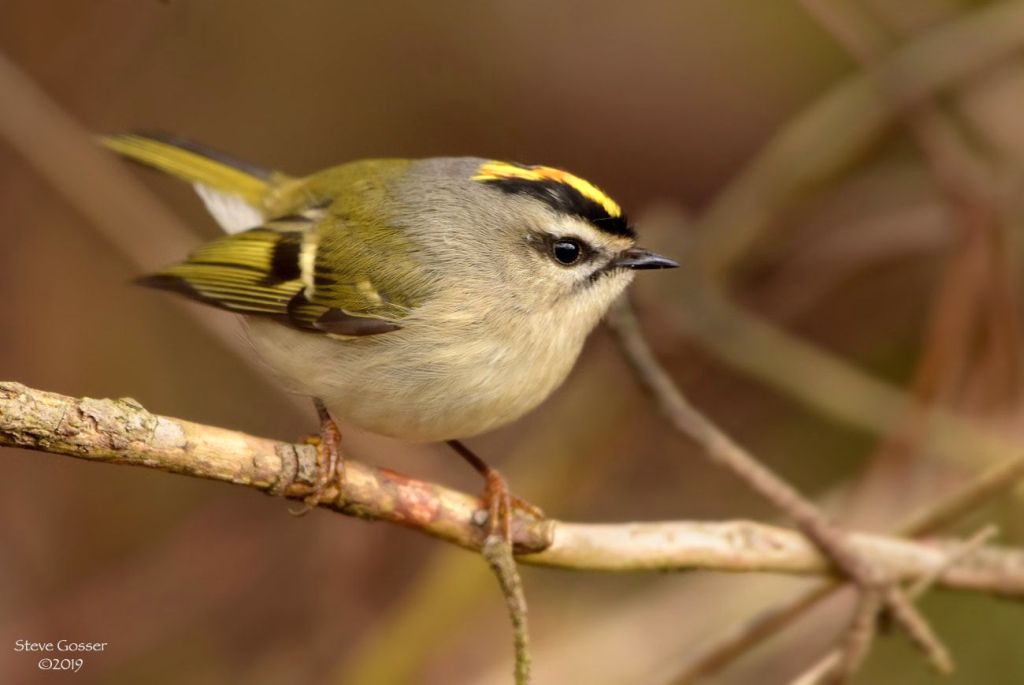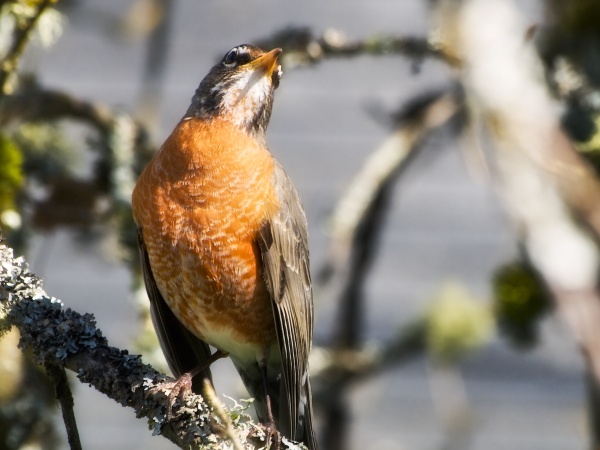
Even though birds don’t sing in the winter they still make warning calls so a “cheeping” bird should be easy to find, right? Not necessarily.
Some species, like chickadees and white-breasted nuthatches, make sounds that are easy to pinpoint but the calls of others are thin, faint, high notes that are hard to triangulate. Is the bird up or down? To the left or right? In that thicket or the next one?
Here’s a list of winter birds whose warning or contact calls are hard to find. The calls may be insubstantial, but if you recognize the sound you’ll at least know what species is hiding in the bush. (Turn up your speakers.)
Northern cardinal (Cardinalis cardinalis)
First on the list is the northern cardinal, shown above. I often identify the call but can’t find the bird. Here’s the contact call of a female, one of the hardest to find (around 7000 Hz).
White-throated sparrow (Zonotrichia albicollis)

This winter visitor, the white-throated sparrow, has a higher pitched warning call than the song sparrow we hear year round. Listen to the white-throated sparrow’s call (4800-5800 Hz) …
… and compare it to a song sparrow’s (Melospiza melodia) lower pitched “vimp” sound (3500-4200 Hz).
Both sparrows use lower, wider frequency ranges than cardinals so they’re easier to find.
Golden-crowned kinglet (Regulus satrapa)

For a really narrow high-pitched frequency you can’t beat the three-note contact call of the golden-crowned kinglet. He’s hard to pinpoint even if you can hear him. Now that I’ve lost my upper range of hearing I rely on friends to tell me when this bird is present. The calls are at 7500-8300 Hertz. Can you hear them? Not I!
Don’t feel bad if you can’t find a bird by its warning or contact call. Even if your hearing is perfect some birds are hiding by voice.
(photos by Cris Hamilton and Steve Gosser, see captions)

p.s. Here’s the call of an American robin that means “Danger From The Air.”
I can’t hear it anymore. Can you?
Glad to say at 1 week short of 68 years old that I can still hear the Golden-crowned Kinglet. But then my high frequency hearing was always exceptional – 15 dB better than normal at 3,000 Hz.
This is a great article and very timely with the Christmas bird count coming up in the next couple of weeks.